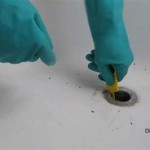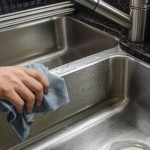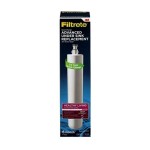Connect Hose to Kitchen Sink
When it comes to plumbing tasks, connecting a hose to a kitchen sink is a simple but essential skill that every homeowner should know. Whether you're filling a bucket, watering plants, or washing your car, a properly connected hose can make the task effortless and efficient.
To begin, gather the necessary materials: a hose, a hose bib (faucet), a hose washer, and a wrench or pliers. It's also helpful to have a bucket or bowl to catch any spilled water.
Step 1: Turn Off the Water Supply
Before starting any work, ensure the water supply to the kitchen sink is turned off. Locate the main water shut-off valve, typically located under the sink or in a nearby utility room. Turn the valve clockwise until it's snug to stop the water flow.
Step 2: Remove the Old Washer (If Necessary)
If the hose bib already has a washer installed, remove the old one by hand or using pliers. It may be worn or damaged, affecting the hose's ability to form a watertight seal.
Step 3: Install the New Washer
Take the new washer and place it over the threads of the hose bib. Ensure it's facing the correct direction, usually with a beveled or tapered edge towards the water source.
Step 4: Connect the Hose
Thread the hose onto the hose bib by hand, turning it clockwise. Avoid overtightening, as this can damage the threads or the hose.
Step 5: Tighten the Connection
Using a wrench or pliers, gently tighten the connection between the hose and the hose bib. Apply just enough force to create a snug fit without stripping the threads.
Step 6: Turn On the Water Supply
Slowly turn on the water supply at the shut-off valve. Observe the connection for any leaks. If there are no leaks, the hose is successfully connected.
Step 7: Check for Leaks
Once the water is flowing, inspect the connection thoroughly for any water seepage. If you notice any leaks, tighten the connection further using the wrench or pliers. Repeat this process until the leak stops.
Additional Tips
- Use a hose washer that is compatible with the hose and hose bib. The wrong size or type of washer can cause leaks.
- Inspect the hose for any cracks or damage before connecting it. A damaged hose can burst and cause flooding.
- Do not overtighten the connection. Overtightening can damage the threads or the hose.
- If you're connecting a hose to a new faucet, it's a good idea to apply a small amount of plumber's tape to the threads for added leak prevention.
- After disconnecting the hose, turn off the water supply to the hose bib and drain the remaining water from the hose to prevent freezing and damage.
By following these simple steps, you can easily and safely connect a hose to your kitchen sink, ensuring a steady water flow for various tasks around the home.

Easy How To Hook Connect A Hose Faucet Sink Yourself

How To Use Garden Hose With Indoor Faucet

Connecting Hose To Kitchen Tap Youtube

How To Attach A Garden Hose Kitchen Faucet Easy Diy

How To Attach A Garden Hose Kitchen Faucet Easy Diy

How To Hook A Garden Hose Your Indoor Faucet De Ice Deck Thaw Containers Raised Beds Early

How To Attach A Garden Hose Kitchen Faucet Easy Diy

How To Change The Faucet Hose In A Kitchen Sink With Pictures

Faucet Quick Connect Removal On Kitchen Spray Hose This One Was A Project Source Youtube

Pull Down Out Hose







